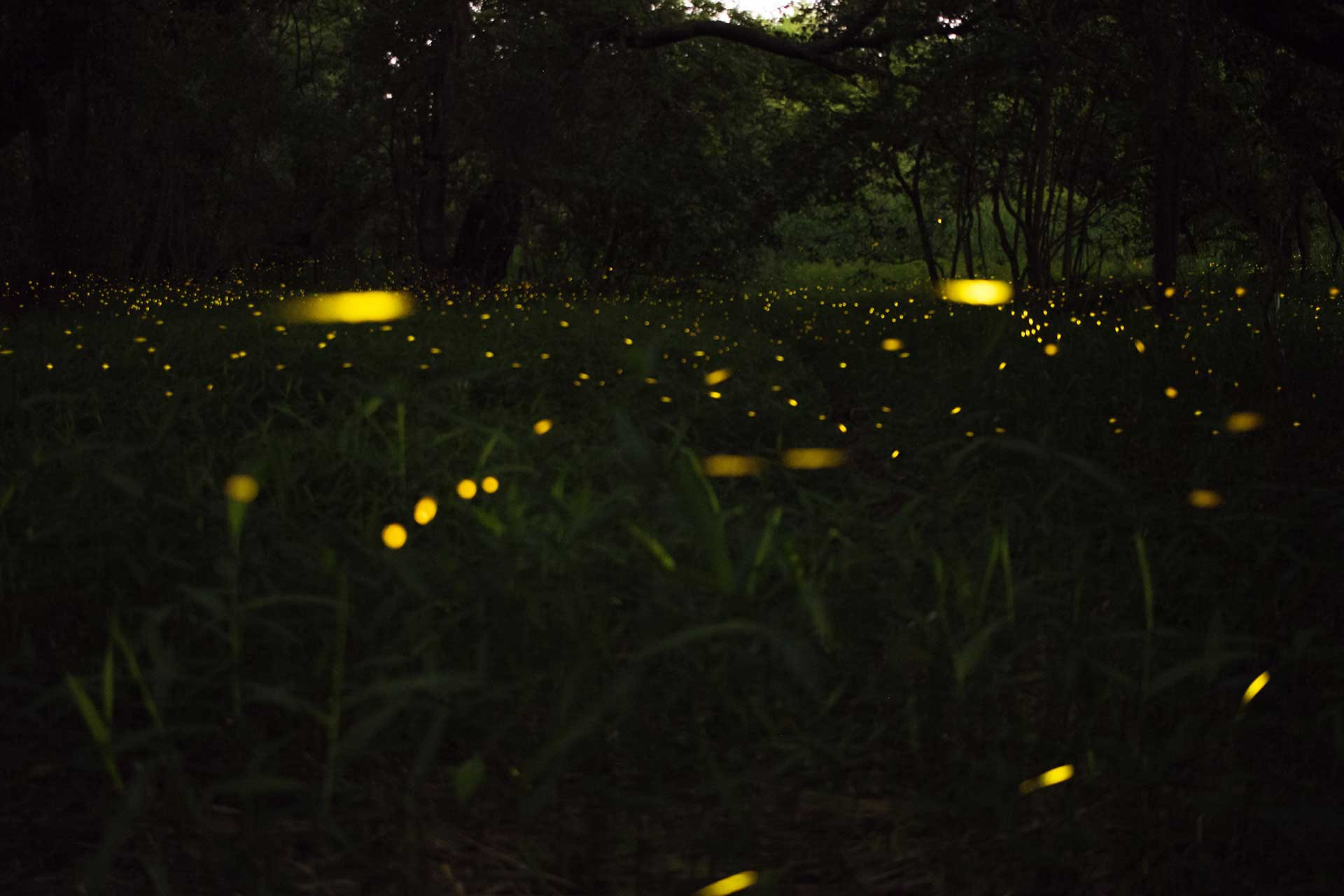This is the fifth and final story in a series of articles written by the students of Azim Premji University as part of a field practice and writing workshop for their sustainability minor.
The night was quiet, the air a little moist, and the sky a sea of flitting lights. The last time I had seen a swarm of fireflies was roughly half a decade ago, in the dead of the night, in Pachmarhi, Madhya Pradesh. It was nothing short of magical to witness them overrun trees and bushes in silence, yet communicating through flickers, sometimes random and sometimes in unison. As we stood under the thick canopy, they performed a slow, beautiful dance, effortlessly living up to their romantic descriptive of a 'light posse' or 'sparkle'.
The surreal sense of being in the glowing embrace of a sparkle of fireflies was gifted to us at the Agasthyamalai Community-based Conservation Centre (ACCC) in Tirunelveli, Tamil Nadu. I wondered why we never saw them again in Pachmarhi, even though we were regular summer visitors to the hill station. Perhaps this dramatic decline in the firefly numbers and sightings is a consequence of habitat loss and degradation, accompanied by pollution, climate change and other global phenomena. Today, especially in cities, one can count themselves lucky to spot even a single firefly.
The sighting at ACCC, situated in the foothills of the Kalakkad-Mundanthurai Tiger Reserve (KMTR), was significantly smaller than the one in Pachmarhi, but walking down the mud path beside the conservation centre in the silent company of fireflies was an experience of its own. Why was I seeing a swarm of fireflies so many years later and in this specific region? What did the sightings imply about the forest, and what did the environment possess that other areas like Pachmarhi and most cities lack today?
The Agasthyamalai region is one of the most diverse areas in the Western Ghats. ACCC’s surrounding forests hosted a variety of species of trees, plants, and wildlife. Fireflies need a narrow range of habitat conditions to survive. Their presence indicates good air, water, and soil quality and abundant food sources. Fireflies are bioluminescent, chemically producing light in their bodies to communicate with each other. They need an environment with low light, and their presence indicates that the area is relatively free from artificial light sources. Habitat loss, land degradation, air, land and light pollution, and use of pesticides, among others, disrupt firefly mating and reproduction cycles, leading to reduced populations.
Today, many experts and studies have deemed many species of fireflies are at risk of extinction in North America. More studies on fireflies in India are required to understand the human-induced impacts on local populations. Many insect species are disappearing rapidly across the globe, including in India, and entomologists fear that the lack of conservation efforts will lead to the extinction of a large number of species. Efforts to reverse or, at least, stall these trends require interdisciplinary approaches, and multiple stakeholders need to work together to identify and address issues that threaten native species, ecosystems and habitats. Conservation efforts would include the preservation and restoration of firefly habitats and extensive research and evaluation of species phenologies, habitats and threats. In addition to tackling unsustainable practices, we must raise awareness among local communities and other stakeholders. In Agasthyamalai, where organisations like ATREE operate from a social-ecological lens, there is still hope for fireflies.
For many, the magic of fireflies seems to be a mere memory. During my recent field trip, I was lucky enough to revisit our collective nostalgia for these lightning bugs. But the lack of conservation and preservation of their habitats could take away the precious few opportunities left to bask in their sparkle.
We would like to thank the Ashoka Trust for Ecology and Environment (ATREE) for facilitating the field practice and Krishna Anujan for conducting the writing workshop.




